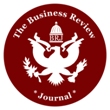| |
Predicting Innovation Ability by
Hofstede’s Cultural Dimensions
Hannes
Witte, Jacksonville University, FL
Dr. Gordon
W. Arbogast, Jacksonville University, FL
Dr. Jim
Mirabella, Jacksonville University, FL
ABSTRACT
Globalization and the need for technology are two of the main trends businesses
are currently facing. Both are also reason for companies to find innovation
friendly countries for their subsidiaries. Selecting a location is not trivial
and influenced by many diverse factors such as culture. Starting in 1979, Geert
Hofstede, a social psychologist in the field of business, used employee surveys
to analyze cultures by their components. His now well-known and widely spread
work bases on the categorization of cultures by four (later six) different
dimensions. The focus of this paper is to investigate if companies can use
Hofstede’s cultural dimensions to identify countries with great innovation
potential. Therefore, this paper explores the relationship between countries’
scores in each dimension to their number of patent applications per capita. The
research also develops the “best” model to help explain the variation in patent
applications. This final model is a parsimonious model as it explains
differences of innovation ability with an R square of 42% with only two
explanatory variables: The Power Distance Index and the Pragmatism Index. The
paper concludes with recommendations for further research. This includes
measuring the ongoing shifts in cultural features that has been observed as
occurring in several of the major countries. What do international giants like
Apple and many urban millennials, challenging their entrepreneurial skills, have
in common? Both are increasingly relying on the emergence of innovation. Modern
technology turned innovation from a need to an enabler which is highly sought
after and more easily accessible than ever.
Full text
A
Replication of the 2008 U.S. National Report Card Study on Women in Firefighting
Dr. John
Griffith, Embry-Riddle Aeronautical University, FL
Dr. James
Schultz, Embry-Riddle Aeronautical University, FL
Dr. Ronald
Wakeham, Embry-Riddle Aeronautical University, FL
Dr. Marian Schultz, The
University of West Florida, FL
ABSTRACT
Women
comprise 51% of the population in the United States (U.S.), but fill only 3.7%
of paid firefighting positions. This study replicates the survey portion the
2008 benchmark study The National Report Card on Women in Firefighting (Hulett,
Bendick, Thomas & Moccio, 2008). Using the same survey instrument as the 2008
study, this research examined the perceptions of 141 firefighters from across
the U.S. to determine key issues limiting female participation in the fire and
emergency service and how results compared to the findings by Hulett et al. in
2008. Results showed that significantly more women than men felt they were
treated differently due to their gender, experienced ill fitting “turn-out” or
“bunker gear,” perceived supervisors did not address complaints concerning
gender related incidents, and were treated differently due to sexual
orientation. In addition, they revealed that there were no formal procedures for
race or gender-based complaints. More women than men felt that promotions were
not decided upon fairly and that their gender was a barrier to career
development (α=.05). Another set of findings were that the group of survey
takers in this study answered in a statistically similar way to the survey
takers in the 2008 The National Report Card on Women in Firefighting
survey. Recommendations include future studies using the 2008 study findings as
a benchmark, and the introduction of polices supporting cultural changes in the
fire and emergency services.
Full text
Promote
Undergraduate Students’ Research Experience through the U.S. – China
Collaborative REU Program
Dr. Sha Li,
Alabama A & M University, AL
Dr. Derrick
Davis, Alabama A & M University, AL
Dr. Lydia
Davenport, Alabama A & M University, AL
ABSTRACT
With the
development of the global economy, international collaboration has been more and
more emphasized. To develop our students’ capabilities to grow in the globalized
environment is ultimately important. Alabama A & M University and Nanjing
Forestry University has developed an internationally collaborative REU program
(Research Experience for Undergraduates) to training American students in
learning how to conduct scientific research in the Chinese academic environment.
The study shows that the students’ learning experiences are much more enriched
and fruitful as compared to the REU programs conducted on our own campus of
Alabama A & M University. This study also found some issues that need to be
resolved and provided some suggestions and solutions to the future similar
programs so as to improve the international collaborated educational programs
between America and China. President Obama announced a 100,000 Strong
Initiative Program in 2010 (The White House, 2011). This Initiative Program is a
strategic movement in American education. He encourages American faculty and
students to increase their interaction with China in the areas of education
especially on science, math, and engineering (McLaren, 2012). The initiative
provides the opportunities for the American young scholars, especially the
underrepresented and underserved minority undergraduate students to go abroad to
learn in a globalized setting, in China in particular. The REU (Research
Experience for Undergraduates) program in China is a valuable long term
investment that is beneficial for the U.S.-China collaboration in a global
economy co-development (McGiffert & Schwarzman, 2014). The Chinese education is
strong in math, science, and engineering.
Full text
Active
Learning Strategies in Accounting
Dr. Denise
de la Rosa, Grand Valley State University, MI
Dennis C.
Stovall, Grand Valley State University, MI
ABSTRACT
When
determining the best way to teach accounting students, considering all the
different ways they can be taught is an important factor. This
paper discusses the many styles, specifically active learning strategies in
which collegiate level accounting classes can be taught to enhance the students’
success. Active learning strategies are those that are focused on learning
approaches where the teaching emphasis of the professor is centered on the
student and how he or she learns. In the text the benefits of active learning
over passive learning are also discussed. Though some constraints do apply
biased on the individual student’s preferences overall the strategies discussed
can be used to enrich accounting students learning. The way in which students
learn has gained a significant amount attention in the modern world. As a
result, many colleges and universities devote plenty of time researching the
methods and strategies they can use, to provide effective learning experiences
to their students. Active learning strategies are learning approaches that can
be defined as methods in which the teaching emphasis is centered on the student.
Colleges and universities try to develop new learning methods and strategies
that will be the most effective by tailoring them to a certain student
populations. For instance, students who are majoring in business may prefer to
study in a way that is different from how their peers that major in engineering
do. Also, how an individual learns can vary vastly from each student biased on
their personal preferences. This paper will cover the learning strategies that
can be used to enhance students learning experiences primarily in accounting
classes.
Full text
Exploring the Gap between
Millennials’ Pay Preferences and Compensation Practices
Dr. Lovorka Galetic, Professor,
University of Zagreb, Croatia
Dr. Ivana Nacinovic Braje,
University of Zagreb, Croatia
Dr. Maja Klindzic, University of
Zagreb, Croatia
ABSTRACT
From an organisational perspective
the aim of the reward system is to attract, motivate and retain high performing
employees. Pay systems that are incompatible with employee pay preferences can
create direct or indirect costs for the organisation. Organizations might be
able to increase their attractiveness without affecting labour costs by adapting
company compensation practices to employee pay preferences. This study
investigated compensation preferences of 249 students in Croatia. Research
results indicate that besides high base pay, benefits were clearly identified as
a preferred compensation tool by millennials'. Research results can be used by
managers in developing or modifying reward plans for this generation.
Compensation is a key element of the employment relationship and, in addition
to being the single greatest operating cost for many organizations, it has been
advocated as a tool for enhancing organizational performance and sustained
competitiveness (Milkovich & Newman, 2008). Due to high impact of compensation
management on overall firm performance (Stajkovic & Luthans, 2001, Hansen, 1997,
Jenkins et al. 1998), we recognized the need to research it in detail among
Croatian companies. Organisations have choices about methods of pay. Although
the list of compensation dimensions is pretty exhaustive, Milkovich & Newman
(2008) argue that strategic compensation dimensions include external
competitiveness (e.g., pay level), internal pay structure (e.g., pay hierarchy),
employee contributions (e.g., individual vs. group contribution), benefits
(e.g., flexible vs. fixed), and alternatives to traditional pay systems (e.g.
pay-at-risk or skill-based pay).
Full text
A
Comparative Study Between the UK and the USA House Price Indicators Before and
During the Financial Crisis of 2007-2009
Dr.
Abdelhafid Benamraoui, University of Westminster, UK
ABSTRACT
Although
many studies investigated the house price movements’ indicators in different
markets, the existing literature has less focus on comparing the housing market
behaviour before and during the financial crisis of 2007 to 2009. This study
uses two major housing markets, the UK and the USA, to test the correlation
between average house price changes and economic fundamentals, which have
significant impact on each of the two mortgage markets. Multiple regression
analysis shows that most indicators, including interest rates and earnings,
behave analogously in the pre- and during the financial crisis. However, the
directions of relationship for some of the parameters have changed when the
market is in crisis, especially in the case of loans extended to house purchase
and consumer price index.
The housing market experienced a steady growth before the recent financial
crisis as house prices reached one of their highest levels in history. This,
however, has changed after 2007 under the impact of subprime mortgage crises.
The sudden downturn in financial markets has attracted the interest of many
scholars who focussed on issues such as the causes of the crisis, the factors
behind the spread of the crisis, and the impact of the crisis on different
financial market segments. Some studies also specifically focussed on the impact
of the financial crisis on the housing market (i.e. Dodd and Mills, 2008; Yener,
2009; Bagliano and Morana, 2010; Duca et al., 2010; Demyanyk and Van Hemert,
2011; Goetzmann et al., 2012; Wang and Zhang, 2014; Grimes and Hyland, 2015;
Immergluck, 2015). The studies addressing the effect of financial crisis on the
housing market, however, tend to revolve around one market and also not looking
at the behaviour of economic fundamentals driving house prices both before and
during the crisis period.
Full text
Profitability of Traditional
Banking in Croatia
Dr. Alen
Stojanovic, University of Zagreb, Croatia
Dr. Vlado
Leko, University of Zagreb, Croatia
Dr. Jaksa
Kristo, University of Zagreb, Croatia
ABSTRACT
A banking system cannot be properly
assessed out of context of the overall financial and economic system in which it
operates. A stable and successful banking system is a precondition for efficient
mobilisation and allocation of savings to profitable projects, and as a result,
stable growth of the overall economy. Otherwise, an unstable and inefficient
banking system is not able to fulfil its fundamental tasks and functions, but as
a rule results in production and investment decrease, decline in living
standards and decrease in economic growth.
This paper reviews
the sustainability of the traditional banking activities in Croatia, taking into
account the current economic surroundings,
market environment, regulatory requirements and other important factors of
banks’ performance. The findings
of this analysis may also be of use to many other countries because the problems
and questions to which this paper is trying to give answer to are of universal
and global character. Contemporary financial systems are determined by dynamic
economic, social and political circumstances, regulatory changes,
internationalisation, new technological solutions, and many other important
changes. Nowadays, an overall and strong competition in a financial market
contributes to the introduction of new financial services, price
competitiveness, and development of the overall financial and thereby economic
system. Traditional banking methods and business techniques change, go through
the process of restructuring, redefining and adapting to a new environment.
Contemporary banks strive to expand their business outside the usual borders and
classic business schemes. They change their business philosophy and policy,
enter non-banking financial operations, and even found non-banking financial
institutions themselves.
Full text
Multiobjective Evolutionary Algorithms (MOEAs) Based on Decomposition: A
Promising Area of Artificial Intelligence
Dr. Konstantinos Metaxiotis,
DSS laboratory, Dept. of Informatics, University
of Piraeus, Greece
Konstantinos Liagkouras, DSS laboratory, Dept. of Informatics, University of
Piraeus, Greece
ABSTRACT
Multiobjective evolutionary algorithms (MOEAs) based on decomposition provide a
reliable alternative to Pareto-based approaches. MOEAs based on decomposition,
decompose a multiobjective optimization problem (MOP) into a number of single
objective optimization problems with the assistance of linear or nonlinear
aggregation methods. This paper examines two of the most well-known MOEAs based
on decomposition, namely the MOEA/D and the MOEA/D-DRA. The performance
assessment is carried out with the assistance of the ZDT family of test
functions. The relevant results indicate that the MOEA/D-DRA performs better in
terms of Hypervolume but at the expense of the Spread of solutions across the
Pareto front. In
Multiobjective optimization it is not possible to find a single optimal
solution, as this category of problems require the simultaneously optimization
of several often conflicting objectives (Liagkouras and Metaxiotis, 2014), (Liagkouras
and Metaxiotis, 2015), (Liagkouras and Metaxiotis, 2013). Instead, the specially
designed algorithms for optimizing multiobjective problems try to find a set of
points known as the Pareto optimal set (Metaxiotis and Liagkouras, 2014), (Liagkouras
and Metaxiotis, 2015). The set of points that belong to the Pareto optimal set,
share a common property, that there is not feasible solution which improves one
component of the objective function vector without deteriorating at least one of
the remaining ones.
Full text
Disadvantages of Template Analysis of Creditworthiness of Firms in Banking
Dr. Ugur
Ozarslan, Ide Training &Consulting, Maltepe University, Istanbul
ABSTRACT
This paper
examines the differentiations between the template financial analysis and the
supported financial analysis with the working styles of firms. The credit
evaluation process is one of the most important factors in banking. Credit
institutions and banks should give credit. Bankers bring together counterparts
who have excess funds and the firms which are in need of funds. Money collected
by banks has to be placed as credit. The highest priority target of banks is to
minimize the amount of bad loans, because it is quite difficult to compensate
for the results of bad loan. The margin of interest between the cost of deposit
and the loan interest is very low because of high competition. A wrong credit
appraisal causes either a bad loan or profit loss of the bank. If a Credit
analysis is made, without using the right credit techniques or without defining
the precise funds needed by a company, it causes a wrong credit decision. On the
other hand, if a bank doesn’t open a credit line to a company because of a wrong
appraisal, it means profit loss for the bank. Both of these situations are
considered as failure in banking. Credit evaluation study must be taken into
consideration in wide perspectives. In this study, all of these perspectives
will not be discussed, but the disadvantages of template analysis, which is
considered by banks as the easiest way to review a balance sheet, will be
examined in detail. Template analysis in credit evaluation means that financial
statements taken from a company are analyzed directly using several ratios.
Full text
Creating Taxpayer Awareness in the
21st Century. Just Culture
Ramon
Bonell Colmenero, Professor, The Real
Centro Universitario Escorial-María Cristina, Spain
and Tax Law
Adviser
ABSTRACT
This article's main
objective is to encourage a development of tax consciousness. It aims to provide
conceptual schemes on fiscal responsibility and to help incorporate it as a
right of citizenship to the taxpayer. The article provides tools to form
critical and committed for 21st century citizens. The relevant factor to educate
citizens in this civic conscience if we want to maintain the “Welfare state”.
By contributing to the system, the national tax system receives funds to carry
out social policies approved by the Spanish national budget, the Autonomous
Communities and the Municipal Entities each year. These are decisions that in
the best of cases have been presented in the political programs of the
candidates before the elections and have had the support of citizens through the different mechanisms of
democratic participation. We have gone from the citizen-soldier of the 19th
century to the citizen-worker in the 20th century to the current citizen of the
21st century, who is not only a consumer but an authentically contributing
taxpayer who defrays the national budget with his economic and contributive
capacity. Paying taxes is a reality that has transcendence towards and for the
Welfare state that we want. Making citizens conscious of the importance of
contributing is the ethical and moral reason that conflates both dimensions. It
is necessary to install policies of transparency, control and coordination
between all of the public entities, carrying out actions that lead the way
towards giving citizens information along with legal and contributive training,
with the goal of them obtaining consciousness.
Full text
Creativity in Technology – Are Technology Startup’s More Creative than Large
Technological Firms?
Antonio
Caldas Neto, Stetson University, FL
Dr. Joseph
M. Woodside, Stetson University, FL
ABSTRACT
Startups
are generally referred to as being more innovative and creative than larger
traditional firms. Many successful technology based startups with stocks listed
either in the NYSE or NASDAQ, became so prosperous that they grew into large
companies over the last 20 years, facing the challenge of keeping the innovation
momentum to survive. The purpose of this research report is to compare the
innovation drivers present in tech/Internet based startups and a selection of
prominent companies of the same business segment that reached one billion
dollars in revenue and had continued success levels after their IPO’s. We’ve
selected Google Inc., Facebook Inc., Twitter Inc., LinkedIn Co. and Yahoo Inc.,
as references for the “Large Tech” group and conducted text analytics on annual
reports to identify the frequencies of innovation concepts within this group.
Worldwide markets are currently experiencing volatility and companies face
increasing stakeholder pressures. During previous periods of financial crisis
and recession, companies experienced significant IT cut-backs, though nearly
two-thirds of CIOs identified IT staffing as a limiting factor in deploying new
and innovate technologies. In the lean business environments of today, ongoing
short-term requirements absorb the majority of the bandwidth from executives,
managers, and professional workers. Organizations are too busy responding to
immediate customers, that limited time is spent towards improvements within the
organization, thereby restraining organizational evolution. When spending
constraints and alternative investments are evaluated, competition for resources
is high.
Full text
Value Relevance of
Earnings, Book Value, Revenue, and R&D
Dr. Lianzan Xu, William
Paterson University of New Jersey, NJ
Dr. Francis Cai, William
Paterson University of New Jersey, NJ
ABSTRACT
This paper examines the
valuation of the high-tech industries, especially those high-tech loss firms,
during the 1990-1999 pre-2000 market melt-down and from 2000 to 2012 after the
melt-down. We find evidence, within the high-tech sector, of the anomalous
relation between negative earnings and stock prices as reported by earlier
research. We also find evidence demonstrating the persistence of the anomalous
price-earnings relation after adding book value of equity in the model. Within
the high-tech sector, our test results reject the claim that the abnormal
price-earnings relation is due to model misspecification (missing value relevant
variables) and inclusion of book value into the valuation model eliminates the
abnormal relation. Our empirical test results demonstrate that sales revenues
and R&D expenses, instead of earnings and book value, are highly value relevant
in the valuation of high-tech firms, especially loss-making firms, both before
and after year 2000 market crash. This
study explores the abnormal price-earnings relation for the high-tech sector and
the relevance of revenues, book value, and R&D expenses in the valuation of
high-tech industry, especially those loss firms. The negative price-earnings
relation for loss-making firms raises questions about the validity of the
assumption of a positive and homogeneous relation between price and earnings, as
expressed by the simple earnings capitalization model (Jan and Ou 1995;
Burgstahler and Dichev 1997). A significant negative coefficient on earnings
means that the more negative a firm’s earnings is, the higher its stock prices,
which makes no economic sense. We examine this abnormal price-earnings relation
and the role of book value in loss firm valuation within the high-tech sector.
Full text
|
 The Business Review
Journal
The Business Review
Journal





.gif)